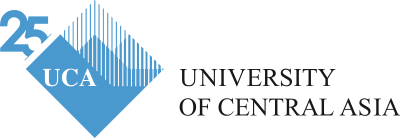Cities of the Dead: The Ancestral Cemeteries of Kyrgyzstan
The first photographic documentation of Muslim cemeteries in Central Asia, this collection presents ethnographic material from collaborative field research in six regions of Kyrgyzstan by American photographer and Cooper Union Professor Margaret Morton and Elmira Köchümkulova. The book and exhibition will contribute to broadening knowledge of the architectural, visual and cultural record of Central Asia within and beyond the region.
A Kyrgyz cemetery seen from a distance is astonishing. The ornate domes and minarets, tightly clustered behind stone walls, seem at odds with this desolate mountain region. Islam, the prominent religion in the region since the twelfth century, discourages tombstones or decorative markers. However, elaborate Kyrgyz tombs combine earlier nomadic customs with Muslim architectural forms. During the Soviet period, enamel portraits of the deceased were attached to the monuments, adding yet another dimension. In contrast to these elaborate and specific adornments, the cemeteries are overgrown with weeds and unmaintained, since maintaining the graves of the dead is not a Kyrgyz custom.
Architecturally unique, Kyrgyzstan’s dramatically sited cemeteries reveal the complex nature of the Kyrgyz people’s religious and cultural identities. Often said to have left behind few permanent monuments or books, the Kyrgyz people in fact left behind a magnificent legacy when they buried their dead.
Traveling in Kyrgyzstan, photographer Margaret Morton became captivated by the otherworldly grandeur of these cemeteries. Cities of the Dead: The Ancestral Cemeteries of Kyrgyzstan presents the photographs she took on several visits to the area and is an important contribution to the architectural and cultural record of this region.
Hardcover, 128 pages, English.
The book can be purchased from University of Central Asia’s Cultural Heritage and Humanities Unit. For more information, please contact chhu@ucentralasia.org.
Available in Central Asia for US$20.








